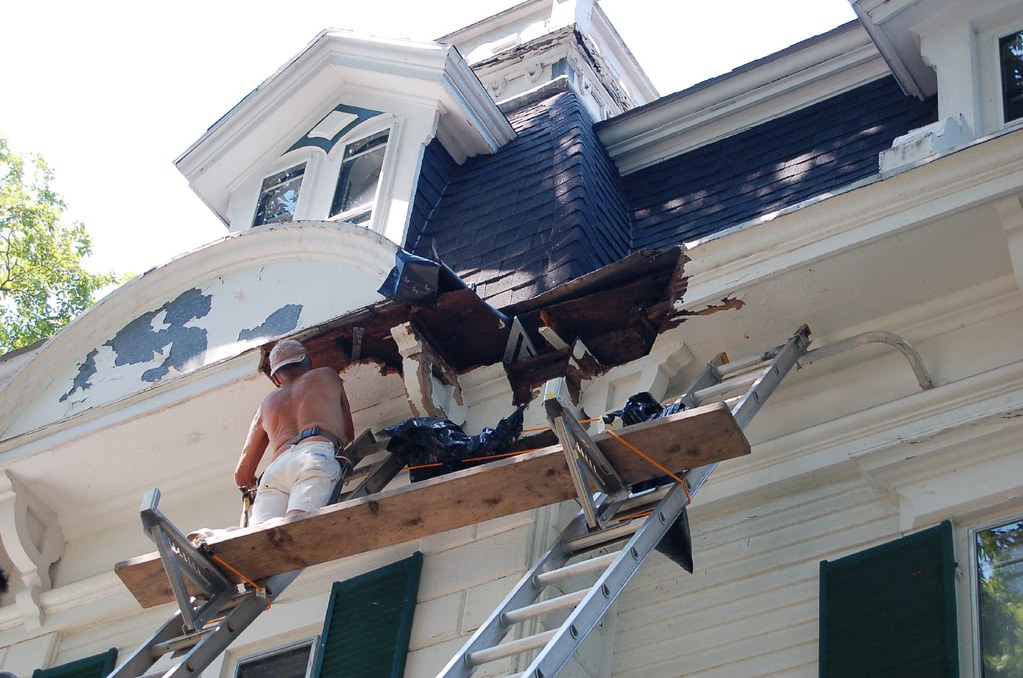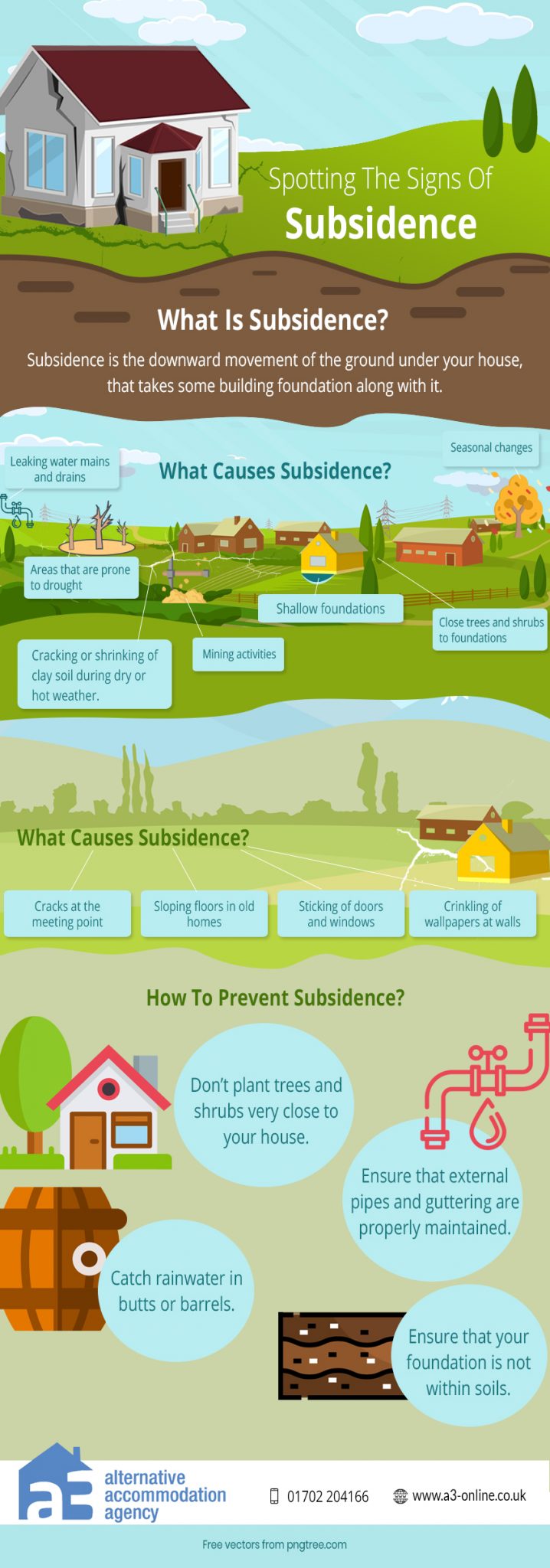
Subsidence is a serious problem that can affect a property’s resale value and structural safety. It is usually difficult to spot, and many homeowners are clueless about how to prevent or fix it. In this post, we would take a look at what subsidence is, its tell-tale signs, as well as how it can be prevented and fixed.
Subsidence is the downward movement of the ground under your house, that takes some building foundation along with it. It puts a lot of strain on your house’s structure because one side will sink and cause cracks. Subsidence is the direct opposite of heave. In other words, it is the gradual sinking of a home’s ground.
 Image Source: John Lindsay / Cottage suffering from subsidence /
Image Source: John Lindsay / Cottage suffering from subsidence /
Subsidence in a home can be caused by many factors. Not every home is at equal risk, as the causes depend on seasonal, geological and man-made factors. Some of the popular ones are:
The causes of subsidence only give a summary of risk factors. To get the whole picture on the next step to take, you need to spot the tell-tale signs of subsidence.
Cracks are the first signs that alert most homeowners of subsidence. If a crack causes subsidence, then it would be:
Other structural changes that can be used to spot subsidence in a home are:
If you think that your property may be at risk of subsidence, it is wise to prevent it from occurring and carrying out the following steps.
A crack monitor is used to determine the extent of the crack at an instant. Initial reading is recorded, after which subsequent readings are taken at regular intervals. This is done to determine if a downward movement is occurring or not. Let the monitor be constantly fixed on the crack. The shape of the crack tells us which part of the building is moving relative to the other.
Perhaps it is too late to carry out subsidence preventive measures on your property. Luckily, there are steps to take to prevent further problems in the future and fix subsidence of your home for you. The first thing to do when your property is subsiding is to contact your house insurers. They will carry out a complete survey to determine if it is a genuine case of subsidence or not.
 Image by jdickert from flickr.com
Image by jdickert from flickr.com
Usually, the process is monitored, and the cause is examined. This is usually an intensive and timely activity that can take up to a year. However, in some other cases, underpinning gives structural support to a product.
Fixing the cracks in the home is also an important step in fixing subsidence. The cracks can be repaired by raking or rep-pointing. If the crack is deep and runs through bricks, then, the bricks should be replaced. Otherwise, reinforced bars can be added to strengthen the horizontal joints through a process called crack stitching.
When all of these methods of fixing subsidence in a home are occurring, you should seek temporary alternative accommodation that would be safer for you.
Underpinning is the process of increasing the depth of or repairing faulting foundations in a home. When the downward movement or crack has stopped, the house can then be underpinned. The goal is to take the existing foundation of your property to a lower depth where it would not be affected by moisture or seasonal changes.
Sadly, subsidence devalues a home in most cases. However, informed homeowners are not too bothered about this occurrence. As long as preventive measures are being put in place, and the home has been mended, the devaluation of the property shouldn’t be an issue to any house seller.
Insurers tread carefully in areas where subsidence is likely to occur. This is one of the reasons why the premiums are higher in such places.
Conclusion
There you have it! Those are the ways to spot a downward moving foundation or building. Subsidence should be taken seriously, and steps to arrest its progress must be quickly put in motion.
